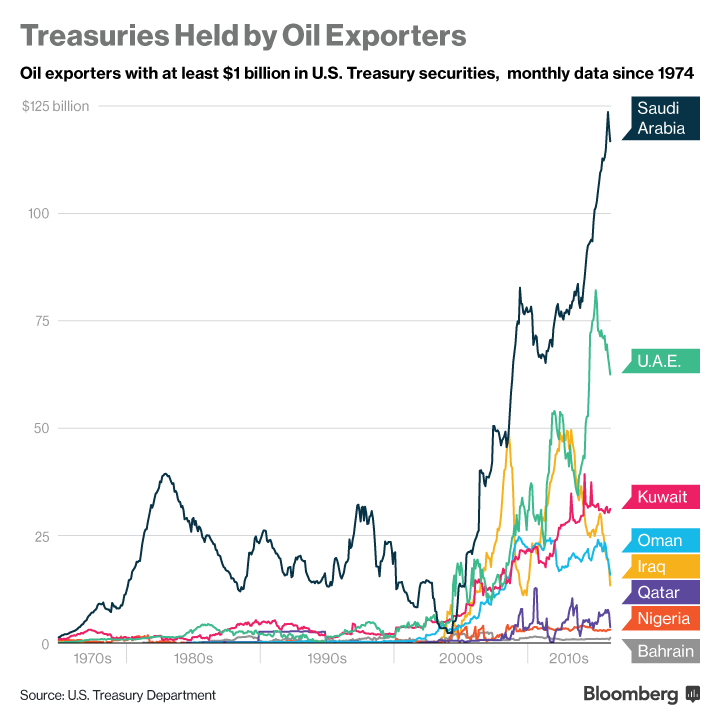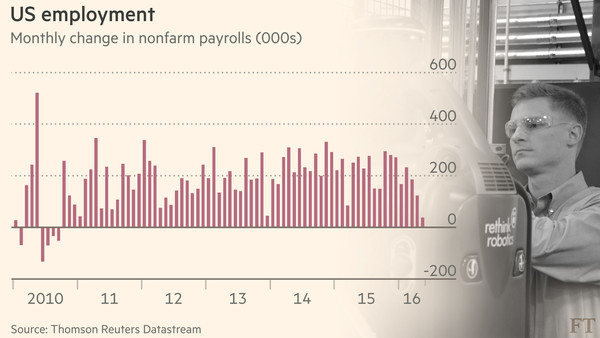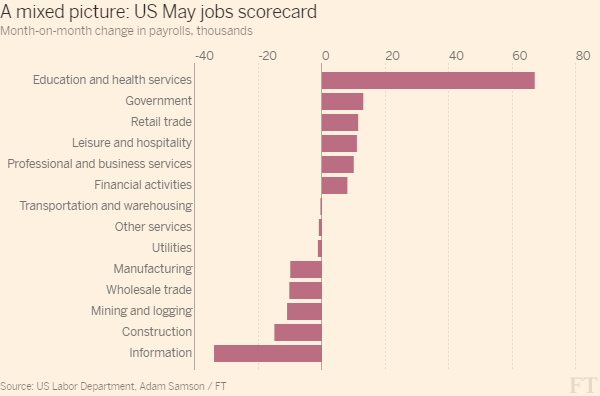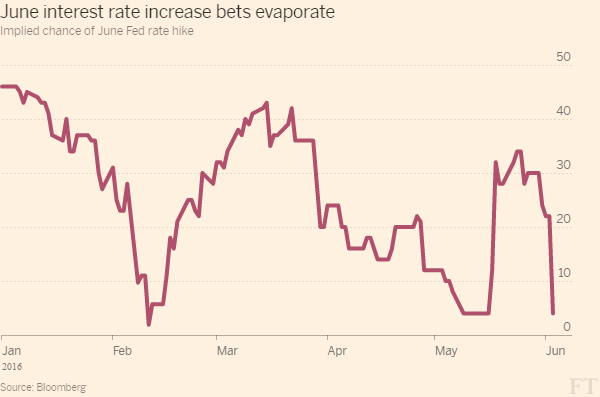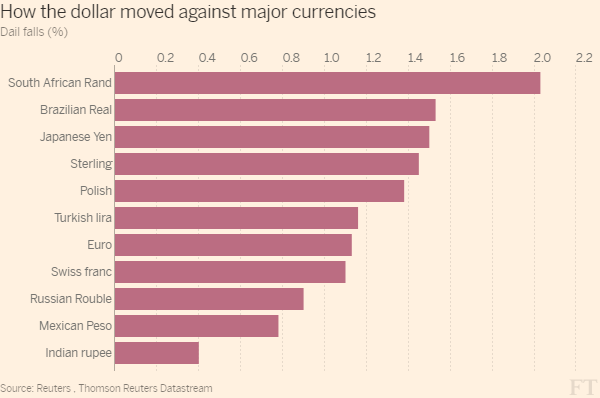
kscarbel2
Moderator-
Posts
18,886 -
Joined
-
Days Won
114
Content Type
Profiles
Forums
Gallery
Events
Blogs
BMT Wiki
Collections
Store
Everything posted by kscarbel2
-
Transport Topics / June 6, 2016 Daimler Trucks North America (DTNA) announced plans June 6 to reduce its North American manufacturing workforce by about 1,240 positions. “DTNA’s workforce adjustments are in response to a sustained reduction in orders and a diminished build rate and are expected to be temporary,” the company said. The Portland, Oregon-based U.S. subsidiary of Germany’s Daimler AG said the reductions include about 600 workers at its facility in Mount Holly, North Carolina; 270 workers in Santiago, Mexico; 200 at its components and logistics facility in Gastonia, North Carolina; and 170 workers at the Western Star plant in Portland. DTNA also said there no plans currently to reduce the workforce at facilities in Cleveland, North Carolina, or Saltillo, Mexico. Last month, Daimler said it was lowering its outlook for overall North America Classes 6-8 truck sales this year by 15% compared with 2015, down from an earlier forecast of a 10% decline. Last year, Classes 6-8 sales were about 425,000. “These workforce adjustments are expected to be temporary and workers will have first rights to be recalled when production is able to sustain a higher build rate,” the company said. . Related reading: http://www.bigmacktrucks.com/topic/45321-daimler-cuts-sales-forecast-as-class-8-orders-stall/#comment-334193 http://www.bigmacktrucks.com/topic/43388-freightliner-to-cut-almost-1000-jobs-at-cleveland-nc-truck-plant/#comment-318678 http://www.bigmacktrucks.com/topic/42262-dtna-forecasts-strong-truck-sales-next-year/#comment-30812 http://www.bigmacktrucks.com/topic/41818-dtna-sees-strong-truck-sales-extending-through-2016/#comment-303980
-
KamAZ Trucks Press Release / June 3, 2016 Almost 1,700 KAMAZ children will receive attend the Saulyk summer camp this year for free. According to KamAZ Deputy Director General Ushenina Alexander, the truckmaker has allocated 24 million Rubles to pay for 1,680 children’s stay at the "Saulyk" (Саулык) summer camp. .
-
Ford Trucks Press Release / June 3, 2016 Ford’s Electronic Stability Program, or ESP (sometimes referred to as ESC – electronic stability control), is an active system that continuously senses the movement and speed of the vehicle and wheel spin. When the system detects a difference between the driver’s commands and the actual movement of the vehicle, the system intervenes to reduce rollover, skidding and jackknifing risk, modulating the brake force for each front, rear or trailer wheel independently and reduces the excess in throttle. . Ford Trucks and You – "Sharing the Load" At Ford Trucks, we’re serious about trucking. It's why we designed the new 2016 Cargo heavy truck range from the ground up to meet your needs and expectations. See your authorized Ford heavy truck dealer for details, or visit the global Ford heavy truck website at https://www.fordtrucks.com.tr/ .
-
In the video, note the Scania license-built Mack C-50 municipal transit bus at 0.08 seconds.
-
Scania Group Press Release / June 3, 2016 With nine vehicles and 35 locations, the Scania 2016 Road Show of Russia is a production of epic proportions. The first Scania vehicle that was exported from Sweden was actually delivered to St. Petersburg back in 1910. Covering more than 17 million square kilometres and with a population of over 140 million people, everything about Russia is big. So when Scania decided to conduct a road tour of the country to celebrate the company’s 125th anniversary, organisers knew the scale of the event had to be monumental. A 35,000 km tour The result is Scania Road Show 2016, a four-month long tour of Russia that will visit 35 dealerships stretching from Murmansk in the country’s west all the way to Vladivostok in the east. Launched in Moscow on May 16, the 35,000-kilometre (21,748 miles) tour is the longest event of its kind ever attempted by Scania, and is aimed at helping Russian truck and bus buyers gain a deeper understanding of Scania’s product range and growing service offering. Scania Russia Commercial Director Sergei Yavorsky explains, “Scania will demonstrate its famous, tried and tested technology in vehicles and engines for a range of applications. These include models recently released on the Russian market such as the LiAZ coach and the Powered by Scania diesel power plant.” The tour brings together a total of nine vehicles painted in special tour livery, including a G 400 4×2 tractor and a Griffin Series R 620 4×2 tractor with Topline cab. Specialised vehicles including a P 440 8×4 tipper, a G 480 6×6 timber truck, a 6×2 P 440 grain truck, and a P 360 6×2 refuse truck will make appearances in locations where they will be of particular interest. Scania’s offering The first leg of the journey starts at Murmansk in late May, with the road show heading north-west to Petrozavodsk and St. Petersburg. The second leg is the longest and will involve travelling through central Russia for six weeks. Scania’s vehicles and engines will be shown in the Urals, the taiga around Lake Baikal and on desolate routes between Chita and Vladivostok. Finally, the fleet will head south to locations including Krasnodar Krai and Georgievsk. .
-
Volvo Trucks USA Press Release / June 5, 2016 Experience the Power of Volvo: The 2017 powertrain lineup The Volvo D13 with turbo compounding was designed for customers in long-haul applications. Turbo compounding recovers wasted exhaust heat and converts it to useable mechanical energy in the form of 50 additional horsepower that is transferred back into the engine. This results in up to a 6.5 percent improvement in fuel efficiency compared with previous engine models. - See more at: http://www.volvogroup.com/group/globa.... Learn more: http://bit.ly/1pKtvXu .
-
Fleet Owner / June 3, 2016 Orders for medium-duty units also slowed to their lowest level since July of 2014 Class 8 orders were characterized as “subdued” in May by industry analysts, increasing just 4% over April’s order volume to 14,100 units. On top of that, medium-duty orders slowed to their lowest level since July 2014, notching just 17,100 units for May. However, despite that 14% month-over-month and 18% year-over-year decline in medium-duty orders, medium-duty order intake remained 4% higher on a year-to-date basis. Michael Baudendistel, vice president of the transportation & logistics research group at Stifel Financial Corp., noted that though Class 8 orders in May were “somewhat stronger” than expected, they are “still very weak relative to demand seen last year, down 30% year-over-year.” Stifel anticipates orders would be down slightly sequentially, as trucking conditions remain poor or continue to deteriorate, plus May is "generally somewhat weaker" for truck orders than April on a seasonal basis. “Still, the slight variance relative to our expectations in the month is not significant enough to change our Class 8 expectations for full-year 2016 or beyond,” Baudendistel said. He added that Class 5-7 medium-duty data was “somewhat weaker than expected,” with the decline from prior-year levels “somewhat of a surprise after stronger-than-anticipated demand in recent months.” Regardless, Stifel continues to believe that medium-duty production will be up slightly in the low-single digits for 2016 based on the order intake over the last few months. The Class 8 forecast, however, is not so rosy to the eyes of Don Ake, vice president research firm FTR, with order activity in May the lowest for the month since 2010 and 30% below a year ago. The past three months of Class 8 order activity annualizes to just 175,000 units, he added, with the annualized rate for the past twelve months continuing to fall, now at 231,000 units. “The soft order activity [in May for Class 8 units] was expected. The good news is that they did not fall further from April, [and] some erosion in order activity is expected during the slow summer months,” Ake explained. “But fleets do not need to order many trucks in the current environment because in most cases they have enough trucks to handle the freight. Freight demand is still sluggish due to the build-up of business inventories.” He pointed out that dealer inventories of Class 8 trucks “remain bloated, so the only truck orders now are mainly for replacement purposes, with preferred specifications.” With backlogs expected to keep falling – they are now below May 2014, Ake said – it will “be a challenge for the OEMs to schedule production through the summer,” and thus “extended vacation shutdowns” are anticipated. “Three consecutive months of decidedly lower net orders for heavy duty commercial vehicles appear more closely aligned with current activity in the manufacturing and energy sectors of the broader economy,” added another analyst. “While metrics in these segments are improving, they can best be described as not being as bad as they were previously,” he noted. “[That’s] framed by the ongoing overcapacity narrative – too many trucks chasing too little freight – the resultant weak freight rate environment, and continued softness in late-model used tractor values.”
-
Ford doesn't want to make it easy for North American customers to know. Heaven forbid, potential U.S. heavy truck customers might begin asking questions about availability, which Ford's N.A. customer relations people would view as an annoying distraction.
-
Paul, compare the two amateur US market mDrive brochures with the far better one put out by Mack Australia. Volvo still keeps their hands tied about releasing any specs, but it's a much better brochure. Must be two different Mack outfits. Mack US (which operates in a vacuum under clueless management) http://www.macktrucks.com/~/media/files/brochures/mack_mdrive_ss_0316_hr.ashx?as=1&la=en http://www.macktrucks.com/~/media/files/brochures/mack_mdrive_hd_crawl_sellsht.ashx?as=1 Mack Australia (which carries on like a professional, accomplished truckmaker). https://www.macktrucks.com.au/~/media/files au/brochures/mdrive_brochure_12_2015.ashx?as=1&la=en The US market brochures don't mention "Maxi-Shift" and "Heavy-Duty Shift". In the spirit of the former Mack Trucks' Maxidyne, Maxitorque and Maxi-Glas terminology, Mack Australia carries the flame forward with "Maxi-Shift".
-
Volvo Group only has one Mack brand plant in the US, that being Lehigh Valley Operations (previously called Macungie by the former Mack Trucks after its location), outside of Allentown. Is that the location you visited?
-
Truck's are a rare item in Volvo Group's lifeless North American market "Born Ready" video. When trucks are visible...........they are always in the background. The video appears to have been originally created for a work clothes manufacturer, and resuscitated in a bid at Volvo's Mack brand business. The video is a black eye for Volvo's U.S. brand and marketing firm, VSA partners. . . Given how pathetic the US market video is, it's puzzling how Mack Australia was able to do what amounts to being a rather good "Born Ready" video. Same meaningless, bland and forgettable slogan, but the video actually focuses on Mack, heritage and........trucks. The one mistake is Volvo didn't hire the immensely respected Steve Brooks to be the narrator. . If one didn't know better, you'd swear that you were looking at two entirely different truckmakers (a bad one, and a very good one). That takeaway is damning to Volvo, and verifies once more that.........what Volvo Group has done, reduce an American icon down to a mere shell of its former self, a Mack nameplate on a North American Volvo platform, should be a crime.
-
Titan or CHU Pinnacle for a lowboy tractor?
kscarbel2 replied to Tuffguy707's topic in Modern Mack Truck General Discussion
All that said, you realize that the Volvo I-Shift (and Mack-branded variants) is available in many versions with differing ratings. The units sold in Oz are not identical to the units sold in the states. Volvo's US market I-Shift (mdrive) brochures don't list models, max torque ratings or gear ratios........no specs whatsoever. Apparently you're supposed to blindly trust them, and not question. -
"People should and do trust me" - Hillary Clinton
kscarbel2 replied to kscarbel2's topic in Odds and Ends
-
I'm not sure that I'm following you. Click on this link below, and then click on "Visit International Site", or click on the word "International" at the bottom left of the page. https://www.fordtrucks.com.tr/Language
-
The Prima, introduced in 2008, is a tale of two trucks. The India-produced Tata-branded Prima is rugged where it counts (chassis), but low cost in all other areas to meet the ultra price sensitive Indian market requirement. Meanwhile, the Korea-produced Daewoo-branded Prima is medium to high-end with Daewoo 11-liter V-8 power to 450hp, Cummins ISM to 440hp and [Iveco] Cursor 13 power up to 560 hp, paired with ZF 16-speed manual transmissions or ZF AS Tronic 12-speed AMTs, and air suspension. (FYI - General Motors purchased the car-making Daewoo Motors in 2002, and Tata acquired Daewoo Commercial Vehicles in 2004) Tata Daewoo Global Website - http://www.tata-daewoo.com/ Tata (India) Global Website - http://www.tatamotors.com/product/prima/ Tractor brochure http://www.trucksplanet.com/photo/daewoo/prima/prima_k1055.pdf Tipper brochure http://www.trucksplanet.com/photo/daewoo/prima/prima_k1054.pdf Mixer brochure http://www.trucksplanet.com/photo/daewoo/prima/prima_k987.pdf Rigid brochure http://www.trucksplanet.com/photo/daewoo/prima/prima_k991.pdf .
-
Bloomberg / June 5, 2016 Failure was not an option. It was July 1974. A steady predawn drizzle had given way to overcast skies when William Simon, newly appointed U.S. Treasury secretary, and his deputy, Gerry Parsky, stepped onto an 8 a.m. flight from Andrews Air Force Base. On board, the mood was tense. That year, the oil crisis had hit home. An embargo by OPEC’s Arab nations—payback for U.S. military aid to the Israelis during the Yom Kippur War—quadrupled oil prices. Inflation soared, the stock market crashed, and the U.S. economy was in a tailspin. Officially, Simon’s two-week trip was billed as a tour of economic diplomacy across Europe and the Middle East, full of the customary meet-and-greets and evening banquets. But the real mission, kept in strict confidence within President Richard Nixon’s inner circle, would take place during a four-day layover in the coastal city of Jeddah, Saudi Arabia. The goal: neutralize crude oil as an economic weapon and find a way to persuade a hostile kingdom to finance America’s widening deficit with its newfound petrodollar wealth. And according to Parsky, Nixon made clear there was simply no coming back empty-handed. Failure would not only jeopardize America’s financial health but could also give the Soviet Union an opening to make further inroads into the Arab world. It “wasn’t a question of whether it could be done or it couldn’t be done,” said Parsky, 73, one of the few officials with Simon during the Saudi talks. At first blush, Simon, who had just done a stint as Nixon’s energy czar, seemed ill-suited for such delicate diplomacy. Before being tapped by Nixon, the chain-smoking New Jersey native ran the vaunted Treasuries desk at Salomon Brothers. To career bureaucrats, the brash Wall Street bond trader—who once compared himself to Genghis Khan—had a temper and an outsize ego that was painfully out of step in Washington. Just a week before setting foot in Saudi Arabia, Simon publicly lambasted the Shah of Iran, a close regional ally at the time, calling him a “nut.” But Simon, better than anyone else, understood the appeal of U.S. government debt and how to sell the Saudis on the idea that America was the safest place to park their petrodollars. With that knowledge, the administration hatched an unprecedented do-or-die plan that would come to influence just about every aspect of U.S.-Saudi relations over the next four decades (Simon died in 2000 at the age of 72). The basic framework was strikingly simple. The U.S. would buy oil from Saudi Arabia and provide the kingdom military aid and equipment. In return, the Saudis would plow billions of their petrodollar revenue back into Treasuries and finance America’s spending. It took several discreet follow-up meetings to iron out all the details, Parsky said. But at the end of months of negotiations, there remained one small, yet crucial, catch: King Faisal bin Abdulaziz Al Saud demanded the country’s Treasury purchases stay “strictly secret,” according to a diplomatic cable obtained by Bloomberg from the National Archives database. With a handful of Treasury and Federal Reserve officials, the secret was kept for more than four decades—until now. In response to a Freedom-of-Information-Act request submitted by Bloomberg News, the Treasury broke out Saudi Arabia’s holdings for the first time this month after “concluding that it was consistent with transparency and the law to disclose the data,” according to spokeswoman Whitney Smith. The $117 billion trove makes the kingdom one of America’s largest foreign creditors. Yet in many ways, the information has raised more questions than it has answered. A former Treasury official, who specialized in central bank reserves and asked not to be identified, says the official figure vastly understates Saudi Arabia’s investments in U.S. government debt, which may be double or more. The current tally represents just 20 percent of its $587 billion of foreign reserves, well below the two-thirds that central banks typically keep in dollar assets. Some analysts speculate the kingdom may be masking its U.S. debt holdings by accumulating Treasuries through offshore financial centers, which show up in the data of other countries. Exactly how much of America’s debt Saudi Arabia actually owns is something that matters more now than ever before. While oil’s collapse has deepened concern that Saudi Arabia will need to liquidate its Treasuries to raise cash, a more troubling worry has also emerged: the specter of the kingdom using its outsize position in the world’s most important debt market as a political weapon, much as it did with oil in the 1970s. In April, Saudi Arabia warned it would start selling as much as $750 billion in Treasuries and other assets if Congress passes a bill allowing the kingdom to be held liable in U.S. courts for the Sept. 11 terrorist attacks, according to the New York Times. The threat comes amid a renewed push by presidential candidates and legislators from both the Democratic and Republican parties to declassify a 28-page section of a 2004 U.S. government report that is believed to detail possible Saudi connections to the attacks. The bill, which passed the Senate on May 17, is now in the House of Representatives. Saudi Arabia’s Finance Ministry declined to comment on the potential selling of Treasuries in response. The Saudi Arabian Monetary Agency didn’t immediately answer requests for details on the total size of its U.S. government debt holdings. “Let’s not assume they’re bluffing” about threatening to retaliate, said Marc Chandler, the global head of currency strategy at Brown Brothers Harriman. “The Saudis are under a lot of pressure. I’d say that we don’t do ourselves justice if we underestimate our liabilities” to big holders. Saudi Arabia, which has long provided free health care, gasoline subsidies, and routine pay raises to its citizens with its petroleum wealth, already faces a brutal fiscal crisis. In the past year alone, the monetary authority has burned through $111 billion of reserves to plug its biggest budget deficit in a quarter-century, pay for costly wars to defeat the Islamic State, and wage proxy campaigns against Iran. Though oil has stabilized at about $50 a barrel (from less than $30 earlier this year), it’s still far below the heady years of $100-a-barrel crude. Saudi Arabia’s situation has become so acute the kingdom is now selling a piece of its crown jewel—state oil company Saudi Aramco. What’s more, the commitment to the decades-old policy of “interdependence” between the U.S. and Saudi Arabia, which arose from Simon’s debt deal and ultimately bound together two nations that share few common values, is showing signs of fraying. America has taken tentative steps toward a rapprochement with Iran, highlighted by President Barack Obama’s landmark nuclear deal last year. The U.S. shale boom has also made America far less reliant on Saudi oil. “Buying bonds and all that was a strategy to recycle petrodollars back into the U.S.,” said David Ottaway, a Middle East fellow at the Woodrow Wilson International Center in Washington. But politically, “it’s always been an ambiguous, constrained relationship.” Yet back in 1974, forging that relationship (and the secrecy that it required) was a no-brainer, according to Parsky, who is now chairman of Aurora Capital Group, a private equity firm in Los Angeles. Many of America’s allies, including the U.K. and Japan, were also deeply dependent on Saudi oil and quietly vying to get the kingdom to reinvest money back into their own economies. “Everyone—in the U.S., France, Britain, Japan—was trying to get their fingers in the Saudis’ pockets,” said Gordon S. Brown, an economic officer with the State Department at the U.S. embassy in Riyadh from 1976 to 1978. For the Saudis, politics played a big role in their insistence that all Treasury investments remain anonymous. Tensions still flared 10 months after the Yom Kippur War, and throughout the Arab world, there was plenty of animosity toward the U.S. for its support of Israel. According to diplomatic cables, King Faisal’s biggest fear was the perception Saudi oil money would, “directly or indirectly,” end up in the hands of its biggest enemy in the form of additional U.S. assistance. Treasury officials solved the dilemma by letting the Saudis in through the back door. In the first of many special arrangements, the U.S. allowed Saudi Arabia to bypass the normal competitive bidding process for buying Treasuries by creating “add-ons.” Those sales, which were excluded from the official auction totals, hid all traces of Saudi Arabia’s presence in the U.S. government debt market. “When I arrived at the embassy, I was told by people there that this is Treasury’s business,” Brown said. “It was all handled very privately.” By 1977, Saudi Arabia had accumulated about 20 percent of all Treasuries held abroad, according to The Hidden Hand of American Hegemony: Petrodollar Recycling and International Markets by Columbia University’s David Spiro. Another exception was carved out for Saudi Arabia when the Treasury started releasing monthly country-by-country breakdowns of U.S. debt ownership. Instead of disclosing Saudi Arabia’s holdings, the Treasury grouped them with 14 other nations, such as Kuwait, the United Arab Emirates and Nigeria, under the generic heading “oil exporters”—a practice that continued for 41 years. The system came with its share of headaches. After the Treasury’s add-on facility was opened to other central banks, erratic and unpublicized foreign demand threatened to push the U.S. over its debt limit on several occasions. An internal memo, dated October 1976, detailed how the U.S. inadvertently raised far more than the $800 million it intended to borrow at auction. At the time, two unidentified central banks used add-ons to buy an additional $400 million of Treasuries each. In the end, one bank was awarded its portion a day late to keep the U.S. from exceeding the limit. Most of these maneuvers and hiccups were swept under the rug, and top Treasury officials went to great lengths to preserve the status quo and protect their Middle East allies as scrutiny of America’s biggest creditors increased. Over the years, the Treasury repeatedly turned to the International Investment and Trade in Services Survey Act of 1976—which shields individuals in countries where Treasuries are narrowly held—as its first line of defense. The strategy continued even after the Government Accountability Office, in a 1979 investigation, found “no statistical or legal basis” for the blackout. The GAO didn’t have power to force the Treasury to turn over the data, but it concluded the U.S. “made special commitments of financial confidentiality to Saudi Arabia” and possibly other OPEC nations. Simon, who had by then returned to Wall Street, acknowledged in congressional testimony that “regional reporting was the only way in which Saudi Arabia would agree” to invest using the add-on system. “It was clear the Treasury people weren’t going to cooperate at all,” said Stephen McSpadden, a former counsel to the congressional subcommittee that pressed for the GAO inquiries. “I’d been at the subcommittee for 17 years, and I’d never seen anything like that.” Today, Parsky says the secret arrangement with the Saudis should have been dismantled years ago and was surprised the Treasury kept it in place for so long. But even so, he has no regrets. Doing the deal “was a positive for America.” .
-
I think you already posted your question last week. My suggestion was, you can click on the link below to the Scania USA website, click on "Distributors And Dealers", and see if they have a service point near you to do your job. http://www.scaniausa.com/
-
The Financial Times / June 3, 2016 Hiring by US employers slowed last month to the weakest pace since 2010, clouding the economic picture and dealing a blow to the prospects for a Federal Reserve rate increase this month. Non-farm payrolls rose by a seasonally adjusted 38,000 in May, below a revised 123,000 figure for April and well below expectations for growth of about 160,000. Employers took on 59,000 fewer workers in March and April than previously reported. The unemployment rate slid to 4.7 per cent from 5 per cent but the declines were driven by people quitting the labour force, rather than buoyant hiring. In a worrying signal, the number of people working part-time because they could not find a full-time post rose by 468,000. Stocks sold off and the dollar fell on the report, which also sent 10-year bond yields sliding from 1.7938 per cent to 1.728 per cent. The DXY dollar index fell 0.8 per cent. The latest payrolls numbers were affected by a strike by 35,000 Verizon Communications workers that began in late April and stretched through May. But even excluding that effect, the jobs report was poor and contrasted sharply with the robust gains that have been seen for much of the decade. “This is a smack in the face for the US economy,” said Diane Swonk of DS Economics. “They [the Fed] need to see a much better June number to keep July on the table . . . When you are losing momentum going into the meeting, that is not when you raise rates.” The strength of the US’s labour market recovery has sat at the heart of Fed chair Janet Yellen’s case for higher interest rates, and a single month’s number will not force the central bank to completely ditch its assessment of the economy. The central bank’s anecdotal Beige Book report, released on Wednesday, indicated that “tight labour markets were widely noted” in most of the Fed’s dozen districts around the country. Friday’s data from the Bureau of Labor Statistics showed that average hourly earnings grew 2.5 per cent compared with the previous year, marking a bright spot. But the jobs data make a Fed move on rates this month highly unlikely — and the odds were already very low given market risks surrounding Britain’s referendum on its EU membership. The implied probability of a June rate rise slumped in futures markets following the numbers from 5.6 per cent to 4 per cent, according to CME Group. Traders now also see a July move as less probable, given that the downward revisions to March and April numbers suggest a broader slowing in hiring. During the past three months, job gains have averaged just 116,000 per month, compared with an average of 229,000 last year. However, the Fed will have two months’ worth of fresh jobs data when it meets in July, meaning the picture could have changed by then. The question they will need to answer is whether hiring has been gently slowing as the economy approaches full employment, or whether companies are cutting back recruitment in the face of weak demand. Worryingly, the pace of growth in the vast US services sector dropped last month to the lowest level since February 2014, adding to wider concerns about the health of the recovery. The month of May saw strong gains in healthcare employment, but a host of other major sectors experienced declines, including manufacturing, where 10,000 jobs were shed; construction, where there were reductions of 15,000; and mining, with declines of 11,000. Retail jobs growth was a marginal 11,000. “Given the drop in corporate profits and investment in recent quarters, it was surprising that job growth held up so well until now,” said Gad Levanon, chief economist for North America at the Conference Board. “We expected job growth to slow, but not that much. This weak payroll report may well deter the Fed from raising rates this summer.” The data made an immediate impression on the presidential campaign, as Donald Trump, the presumptive Republican nominee, called the report a “bombshell” and a “terrible” number. Jason Furman, the chairman of the president’s Council of Economic Advisers said the hiring data were “disappointing” but pointed out that the economy has added 14.5 million jobs since 2010. The safest European government debt plummeted to the lowest levels this year after the release. German Bund yields were driven down to 0.073 per cent, while UK gilts plunged to their lowest in three months, falling 4 basis points on Friday (0.04 percentage points) to 1.298 per cent. The data represent the last major reading on the strength of the labour market before the June meeting. Top Fed officials have in recent weeks cited strength in the labour market as a key reason that the US economy is probably strong enough to withstand a gradual increase in interest rates beginning this summer. .
-
International Harvester was a major player in Oz, thanks to its localization at Dandenong. But Diamond T, Diamond Reo, Dodge* and other US brands were well received. And Oz sure liked the American 2-stroke Detroit Diesels. And please note The Australian Truck Driver's Memorial in the video at 23:10 * "Dodge 7 Series - The Profit Makers"........http://www.bigmacktrucks.com/topic/31209-when-the-dodge-boys-sold-trucks-down-under/.
-
Tested: Mack Super-Liner 685 with 60-inch sleeper
kscarbel2 replied to kscarbel2's topic in Trucking News
Mack was king in Australia, and then Kenworth slowly eroded Mack's market share. Now both are nose and nose. In the US, Mack brand management lives in a vacuum. But what do expect from an unqualified collection of management.......not a one has a background in the truck industry. -
Tested: Mack Super-Liner 685 with 60-inch sleeper
kscarbel2 replied to kscarbel2's topic in Trucking News
Those FTE trailers are cutting edge...............http://www.fte.com.au/ And one can't find a better trailer axle than the BPWs they're fitted with............http://www.bpwtranspec.com.au/products/bpw-axles/ -
Highway 31 | A Journey Down the Old Hume Superb video ! After weeks of comparing the White and Western Star prime movers, it is time for Matt Wood and Steve Brooks to hit the Old Hume Highway to answer the age-old question; is trucking what it used to be? Video - https://www.youtube.com/watch?v=zHHcqYgx2NI
BigMackTrucks.com
BigMackTrucks.com is a support forum for antique, classic and modern Mack Trucks! The forum is owned and maintained by Watt's Truck Center, Inc. an independent, full service Mack dealer. The forums are not affiliated with Mack Trucks, Inc.
Our Vendors and Advertisers
Thank you for your support!




